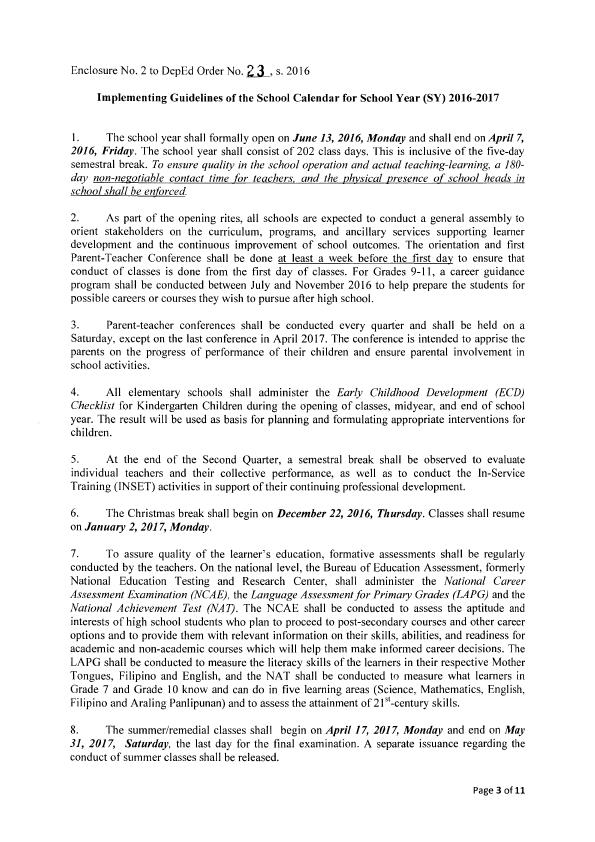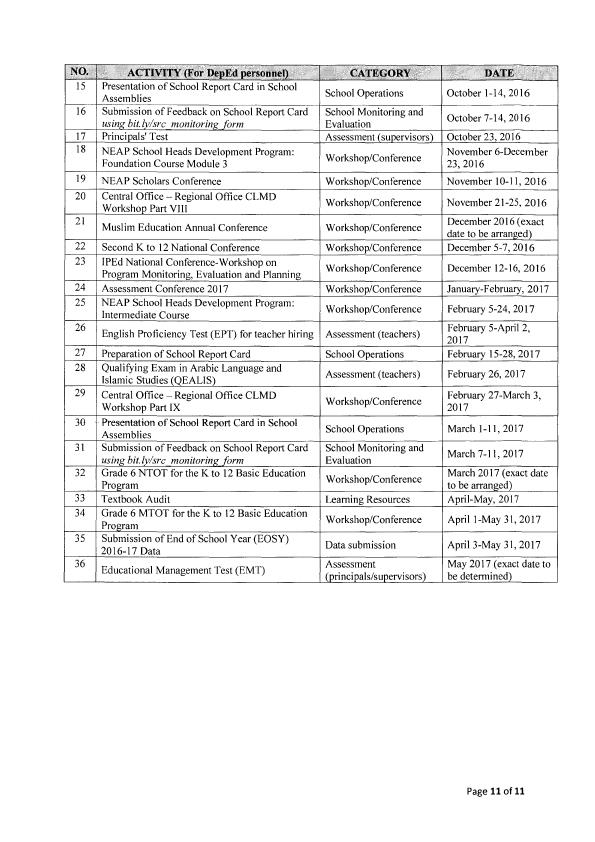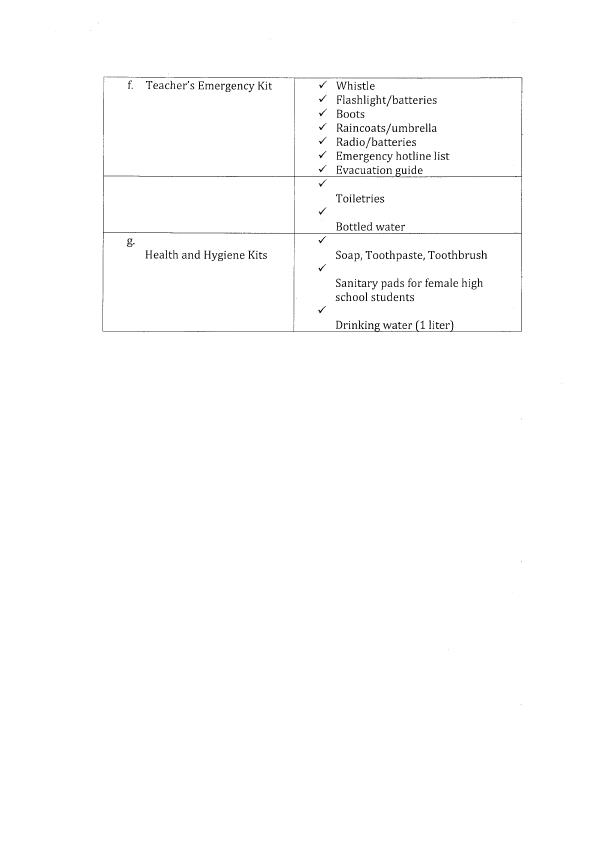B. Definition of Terms
a. For purposes of this Order, the term, “teacher” shall refer to teachers who do not have to report for classes during the Christmas and long summer vacation and still be entitled to their regular compensation.
b. The term, teachers’ vacation service credits refers to the leave credits earned for services rendered on activities during summer or Christmas vacation or in the course of the regular school year, as authorized by the proper authority.
c. The term normal teaching load shall refer to six (6) hours of actual classroom teaching a day.
C. Uses of vacation service credits
Vacation service credits are used to offset absences of a teacher due to illness. To offset absences on account of illness, one (1) work day service credit is used to offset one (1) day of absence.
D. Activities Eligible for the Grant of Service Credits
Service credits may be granted for the following activities:
a. services rendered during registration and election days as long as these are mandated duties under existing laws;
b. services rendered during calamity and rehabilitation when schools are used as evacuation centers;
c. services rendered in connection with the conduct of remedial classes during the summer or Christmas vacation or outside of regular school days;
d. services rendered in connection with early opening of the school year;
e. services rendered during school sports competitions held outside of regular school days;
services rendered by those who train teachers in addition to their normal teaching loads;
f. teaching overload not compensated by honoraria;
g. teaching in non-formal education classes in addition to teaching in formal education classes carrying a normal teaching load;
h. work done during regular school days if these are in addition to the normal teaching load;
i. conduct of testing activities held outside of school days; and
j. attendance/participation in special DepEd projects and activities which are short-term in duration such as English, Science and Math Mentors' Training, curriculum writing workshop, planning workshop, etc., if such are held during the summer vacation or during weekends.
A premium of 20% may be granted for educational activities (as opposed to non-educational activities such as election duties, calamity assistance) which require specialized expertise.
E. Activities Not Eligible for the Grant of Service Credits
Service credits shall not be granted for the following activities:
a. in-service training programs fully funded by the government;
b. assignment to clerical work, such as checking forms and finishing reports commonly required in connection with the opening and closing of classes;
c. reassignment of teachers to duty in another bureau or office; (detailed in another government office)
d. assignment in connection with exhibits at a fair;
e. postponement of a regular teacher’s vacation; and
f. time spent in travelling to and from station to the place where services are rendered.
F. Procedure in the Grant of Service Credits
The following steps shall be followed in the grant of service credits:
a.1 Head of office/school recommends approval of request to render vacation service
a.2 Schools Division Superintendent approves/disapproves request
a.3 If reason for request is not among those listed above, request should be forwarded to the Regional Director for action if activity is region-¬wide and to the Central Office through the Regional Director if activity is DepEd-wide. For attendance/participation in DepEd-wide programs and projects, the Central Office shall make the necessary issuances on the grant of vacation service credits.
b. The following documents/requirements shall be accomplished/submitted
after completion of vacation service:
b.1 accomplishment report
b.2 duly signed DTR/CS Form 48
Other Rules
The following rules shall also apply in the grant or use of service credits:
a. One work day of vacation service credit is granted for one day (eight hours) of service;
b. The number of days of vacation service credits granted to a teacher shall not exceed 15 work days in one year except in cases authorized by the Secretary upon the recommendation of the Regional Director;
c. Vacation service credits shall not be granted for services rendered without previous authority;
d. Teachers on detail in offices or assigned to non-teaching jobs are on the vacation-sick leave basis and should not therefore be granted vacation service credits;
e. In the monetization of teachers leave credits, unused vacation service credits shall be converted into vacation-sick leave credits. After monetization, the remaining vacation-sick leave credits shall be converted back to vacation service credits;
The formula in the conversion of vacation service credits to the vacation and sick leave credits is as follows:
Vacation and Sick Leave* = 30y / 69
Where 30 = Number of days in a month
Y = Total number of teacher's service credits
69 = 58 days of summer vacation plus
11 days of Christmas vacation
*No. of days derived shall be divided equally into vacation and sick leave credits
The formula in the conversion of vacation and sick leave credits to vacation service credits is as follows:
VL + SL
Y = x 69
30
f. The vacation service credits of a teacher who transfers to a non-teaching position may be converted into vacation-sick leave credits and vice-versa; and
g. Unused vacation service credits of teachers who resigned, retired, or are separated from the service through no fault of their own on or after January 16, 1986 shall be paid the money value of their unused vacation service credits converted to vacation and sick leave credits.
h. These guidelines shall take effect immediately.
Strict compliance with this Order is directed.
Reference:
DECS Order; No. 5, s. 1999
Allotment: 1—(D.O. 50-97)
To be indicated in the Perpetual Index under the following subjects:
POLICY
SERVICE
TEACHERS




























